30+ Offensive, Banned, and Controversial Movies
A survey of the most offensive and controversial movies across a variety of cultures and eras.
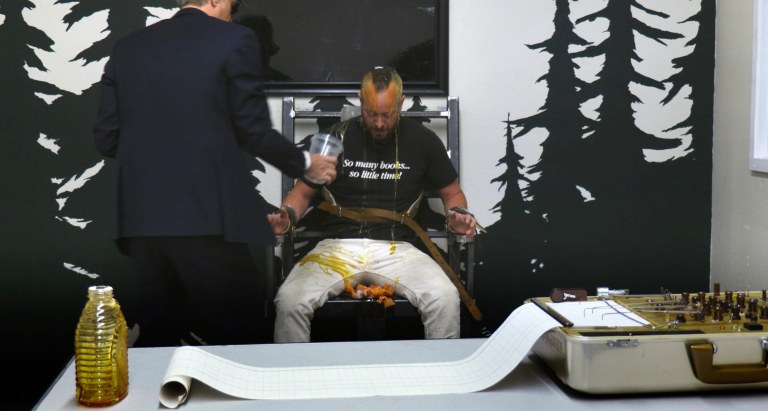
Table of Contents
What makes a film so “offensive” that it leads to controversy and censorship? A starting point is to look at “offensiveness” in terms of time and place.

In cataloging offensive movies, then, we’re jumping into hornet’s nest of relativity. “What is pornography to one man,” D.H. Lawrence wrote, “is the laughter of genius to another.” And the line between blasphemous and artistry is always shifting based on era and geography; not to mention personal identity and taste.
What makes something offensive can can change over the years even in the same culture. Take for example the landmark film, And God Created Woman. Released in 1956, the movie shocked Western audiences. Why? Because it portrayed women as more sexual than men. Today in secular Western culture, this concept is inoffensive. Offensive ebbs and flows with the cultural tide.
In the West, the First Amendment and an open internet make it impossible to completely ban offensive movies, unless they contain illegal content (snuff film or child pornography). In the East, China has the most technologically advanced censorship apparatus on the planet. Yet the reasons they censor films are wholly alien to most Americans and Europeans.

Consider a few censored films in China. Joker (2019) was censored for depicting a violent upheaval against a corrupt government, Brokeback Mountain (2005) was banned for presenting homosexuality in a positive light, and Noah (2014) was blocked because it is a Bible-based story. These films are “offensive” because they undermine the Chinese Communist Party’s political philosophy and authority.
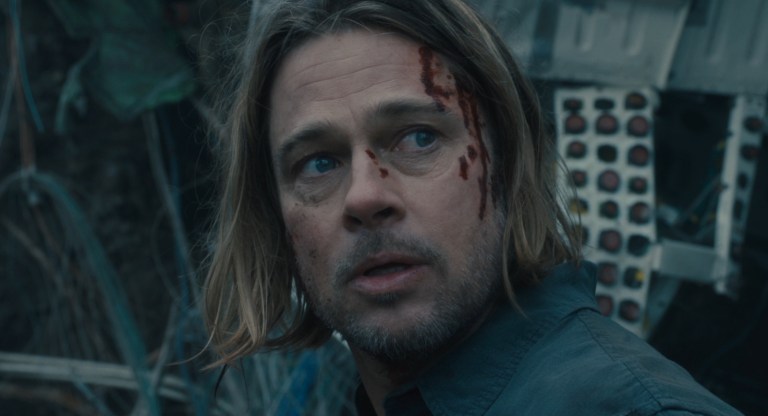
While the East tends to censor through the government, the West can financially doom a movie by public uproar. Dogma (1999) led to protests by Catholics that thought the film was blasphemous. Cuties (2020) created so much backlash for its “sexualized” presentation of young girls that many on social media called for boycotts of the film’s distributor, Netflix.
In the West, movies are also sometimes met with shadow-banning instead of, or in addition to, public uproar. Disney refuses to stream their own movie Song of the South (1946) due to “outdated cultural depictions” in the film. HBO Max has been criticized for burying offensive content, like it’s widely popular TV show Entourage, deep in their streaming library.
Shadow bans also come from the media. The mainstream press often ignores movies explicitly connected to conservative values or filmmakers such as Shut In (2022) and Dragged Across Concrete (2018). Shadow bans might also take the form of a chilling effect where where economic, political, or cultural pressure can sink a film before it is even released. This happened in a jaw-dropping way with the The Interview (2014) and to a lesser degree with The Hunt (2020).
With this list, our goal is not moral, nor comprehensive. It is to simply introduce readers to a diverse survey of movies that have been banned, or deeply controversial, across the globe.
Controversial + Banned Movies
The Birth of a Nation (1915)
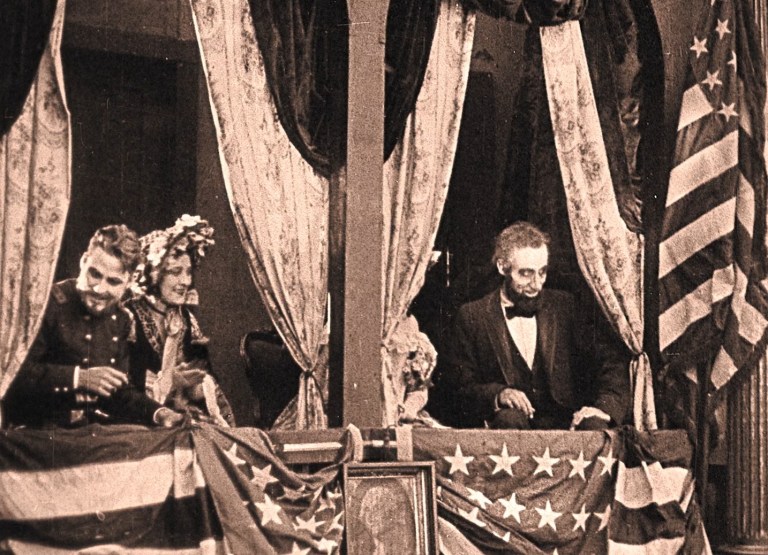
This film remains offensive for its bizarre reinterpretation of the KKK as a positive force in American history. Lots of people seem to forget that it was even controversial in its day. The film, based on Thomas Nixon’s 1905 novel and play The Clansman, is seen as an irredeemably racist movie. It depicts blacks—many of whom were white actors in blackface—as brutish, unintelligent, and prone to raping white women. It has since been called “the most controversial film ever made in the United States” and “the most reprehensibly racist film in Hollywood history.” Quentin Tarantino has gone on record to say that he made 2012’s Django Unchained to debunk The Birth of a Nation‘s racist narrative.
Freaks (1932)

Director Tod Browning followed up his epic achievement with 1931’s Dracula by lensing this story of genetically abnormal circus performers who take revenge against a snobby and cruel blonde trapeze artist named Cleopatra, who seduced a sideshow little man named Hans with the intent of robbing him of his sizable inheritance.
During test screenings, the film’s art director claimed that “Halfway through the preview, a lot of people got up and ran out. They didn’t walk out. They ran out.” Due to the catastrophic test screenings, the most notorious sequence—in which the group of “freaks” assault Cleopatra and turn her into a genetic freak under a tree that was struck by lightning—was removed and lost to history. A scene where Cleopatra’s boyfriend, a muscleman named Hercules, is castrated by the sideshow performers, was also deleted and has never been recovered.
Despite the heavy edits, reviewers were still appalled at the final product. The Kansas City Star wrote, “There is no excuse for this picture. It took a weak mind to produce it and it takes a strong stomach to look at it.” Harrison’s Reports wrote that “Anyone who considers this entertainment should be placed in the pathological ward in some hospital.”
Song of the South (1946)

This is one of the few movies in the massive Disney canon that Disney no longer streams or allows people to purchase. It was set on a Georgia plantation and thus led people to believe it was a depiction of slavery in antebellum times, when it was actually intended to depict the South during postwar Reconstruction. The NAACP released a public statement that read:
“The National Association for the Advancement of Colored People recognizes in Song of the South remarkable artistic merit in the music and in the combination of living actors and the cartoon technique. It regrets, however, that in an effort neither to offend audiences in the north or south, the production helps to perpetuate a dangerously glorified picture of slavery. Making use of the beautiful Uncle Remus folklore, Song of the South unfortunately gives the impression of an idyllic master–slave relationship which is a distortion of the facts.” Harlem Congressman Adam Clayton Powell, Jr. called it “insult to American minorities [and] everything that America as a whole stands for.”
In a tragic irony, lead actor James Baskett, who played the ever-smiling black character Uncle Remus, was forbidden from attending the film’s Atlanta premiere because the South was still deeply segregated.
Lolita (1962)

Based on the scandalous 1955 novel by Vladimir Nabokov about an adult man’s sexual obsession over a 12-year-old girl, Lolita stars James Mason as the middle-aged Humbert Humbert, who is fixated on Dolores “Lolita” Haze (Sue Lyon). Although the film flirts heavily with the idea that the two are engaged in a sexual relationship, director Stanley Kubrick was forced to dial down the erotic elements “because of all the pressure over the Production Code and the Catholic Legion of Decency at the time, I believe I didn’t sufficiently dramatize the erotic aspect of Humbert’s relationship with Lolita. If I could do the film over again, I would have stressed the erotic component of their relationship with the same weight Nabokov did.” Harrison’s Reports wrote, “You don’t have to be an emulating, prissyish uncle from Dubuque to say that the film leaves you with a feeling that is repulsively disgusting in much of its telling,” adding that “even if the exhibitor makes a dollar on the booking, he may feel a sense of shame as he plods his weary way down to the bank.”
Midnight Cowboy (1969)
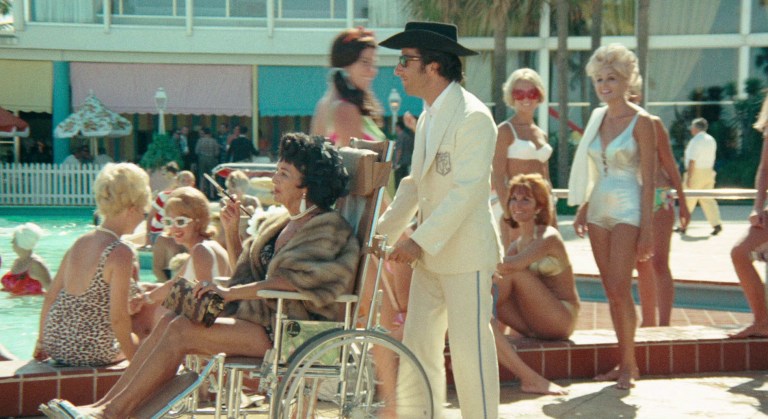
The only film in Hollywood history to receive both an “X” rating—which was usually reserved for hardcore pornography—as well as the Oscar for Best Picture, director John Schlesinger’s film tells of Joe Buck (Jon Voight), a rube from Texas who moves to New York City to become a male hustler, unaware that most of his clients would be men rather than women. It depicts New York City as a decrepit hellhole of depravity. What was most shocking for the time were the non-explicit scenes where Joe Buck has sexual encounters with a string of desperate gay men, culminating in a scene where it is implied he kills an elderly gay man for money.
The Devils (1971)
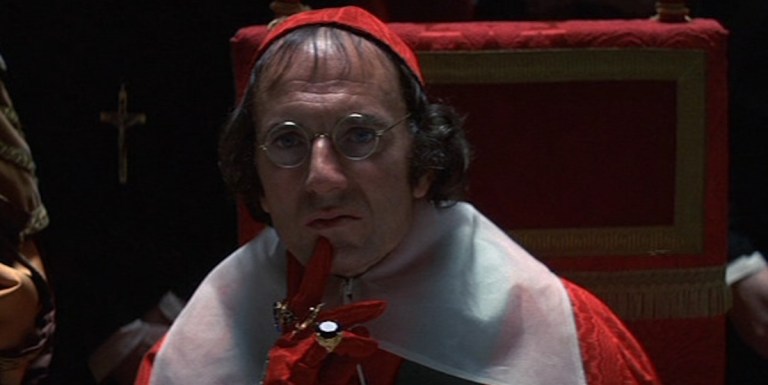
Director Ken Russell was a master of bombast and excess, but this historical drama set in France during the 1600s proved to be more controversial than any of his other films. Adapted from Aldous Huxley’s 1952 novel The Devils of Loudon, the film stars Oliver Reed as a licentious, womanizing, degenerate priest who has several explicitly sexual encounters with local nuns. The film was heavily protested by Christian groups and banned entirely in Italy, whose government even threatened Oliver Reed and actress Vanessa Redgrave with three years in prison if they dared to enter the country. Commenting on the public outcry, Reed said: “We never set out to make a pretty Christian film. Charlton Heston made enough of those… The film is about twisted people.”
In the Realm of the Senses (1976)
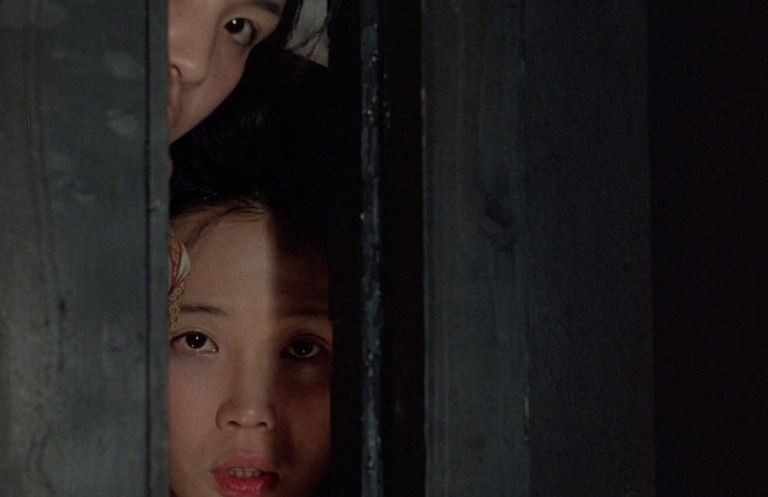
At the time the film was made in Japan, the nation had strict rules forbidding the public exposure of pubic hair or human genitals, a taboo which director Nagisa Oshima got around by sending the undeveloped film from from Japan to France for processing. In an aggressively graphic manner, the film tells of the sexual obsession between a geisha girl and a married man. It depicts erect penises, bloody menstruation, penetration, fellatio, foreign objects being inserted into a vagina, and, most notoriously, a scene where the geisha girl cuts off her lover’s penis and places it inside herself.

Upon release in Japan, all of the graphic scenes were either blurred out or reframed. The USA banned it upon its 1976 premiere at the New York Film Festival. A similar fate befell the film in Germany. But by the 2020s, when such sexual taboos had disappeared, the film was reassessed as a masterpiece.
Faces of Death (1978)

A compilation of atrocity footage in the vein of Mondo Cane, this film was proudly promoted as having been “banned in 40+ countries.” Some of the scenes consisted of legitimate footage of actual death (snuff films), whereas others—such as the notorious bashing of a monkey’s brains at a restaurant—were entirely fake. In fact, the two scenes that British censors demanded be removed before they permitted the film in their country were both faked. Genuine scenes include a graphic fight between pit bulls in Mexico, cannibalism between competing Amazonian tribes, grisly slaughterhouse footage in America, and a live assassination captured on TV in France. The original film was so successful that it led to five sequels that were released between 1981 and 1996.
Caligula (1979)

Written by Gore Vidal—whose screenplay was so extensively overhauled by filmmakers that he ultimately disavowed the film—and produced by Bob Guccione, publisher of Penthouse magazine, Caligula refers to the degenerate Roman emperor of the same name, played by Malcolm McDowell of Clockwork Orange fame. Scenes of depravity include anal fisting, graphic orgies, torture, disembowelment, genital mutilation, and rape. Variety dismissed the film as “a moral holocaust.”
Cannibal Holocaust (1980)
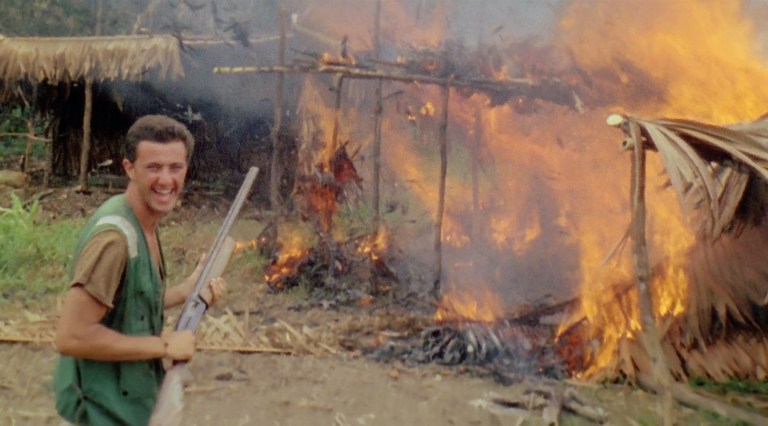
This dramatic film postured as a “found footage” documentary and was so gut-churningly graphic that Italian authorities arrested director Ruggero Deodato on suspicion of murder after its premiere. Although Deodato insisted all the gory scenes were staged, he lost his original trial and risked having all prints of the film destroyed until some of the “murdered” actors appeared on television and confirmed that the film was a drama rather than a documentary. Scenes include animal torture, amputation, the rounding-up and immolation of jungle tribespeople, and the impalement of a young woman from her mouth to her genitals. Unsurprisingly, Cannibal Holocaust was banned in multiple countries. Though Cannibal Holocaust is no longer banned in the United States (it was banned in the U.S. from 1980 to 1985), it still remains one of the most notorious films ever made.
Cruising (1980)

William Friedkin, already notorious for directing The Exorcist, was criticized by the gay community for this grisly, brutal, and depressing portrayal of the hardcore NYC gay leather underground. Al Pacino plays a cop who is assigned to find a serial killer preying upon gay men, but over the course of his investigation he begins to question his own sexuality. Gay activists protested the film because they felt it implied that homosexuality naturally led to violence and serial murder. Cruising opens with the following disclaimer: “The film is not intended as an indictment of the homosexual world. It is set in one small segment of that world which is not meant to be a representative of the whole.” In a case of life imitating art, merely two months after the film’s release, a man used a submachine gun to kill two people and wound several others at The Ramrod, one of the gay bars depicted in the film.
New York Ripper (1982)
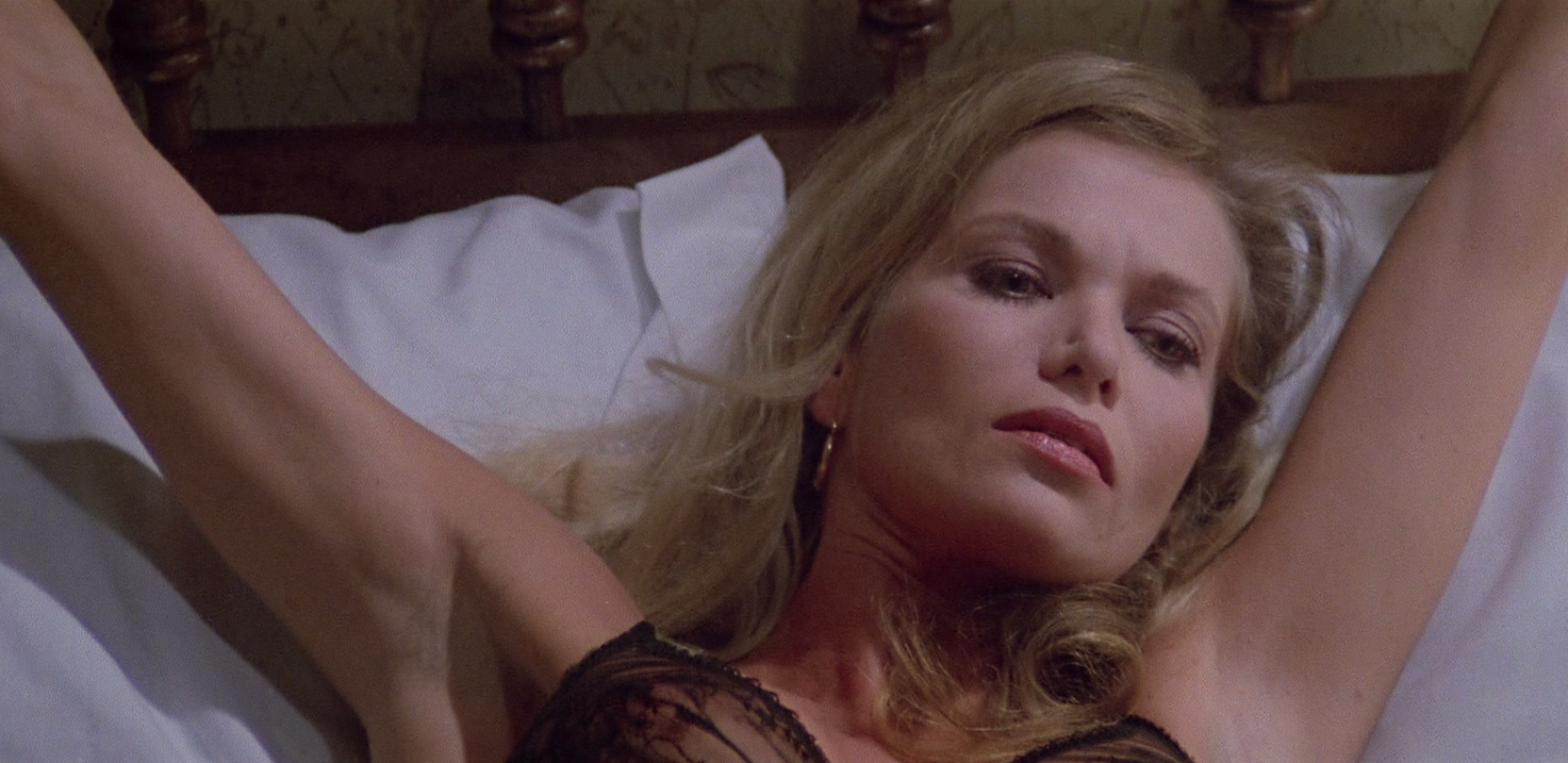
Released in Italy as Lo squartatore di New York, the film follows a beleaguered NYC detective who is tracking a serial killer who stalks, tortures, and kills women using extremely brutal means such as eviscerating one victim on a public ferry and slicing the eyeball of another with a razorblade. TV Guide wrote, “Fulci alternates sleazy sex scenes with graphic and deeply misogynistic murders, fills the plots with twists that make no sense, then wraps the whole thing up in a preposterous psychological flourish.” After the British censor board banned the film in 1984, they made sure to send the test print back to Italy lest they be criminally prosecuted merely for having the film in their possession.
Nightmare on Elm Street II: Freddy’s Revenge (1985)
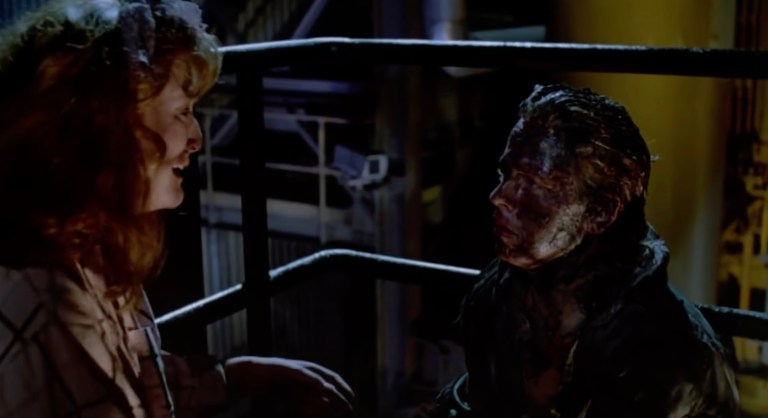
Now held in high regard by certain communities as an early example of gay horror cinema, the finale seems to depict a closeted gay man saved by heterosexual love which was controversial at the time.
Actor Mark Patton says that the film’s gay subtext got more and more explicit over the course of several rewrites. He told a reporter, “It just became undeniable. I’m lying in bed and I’m a pietà and the candles are dripping and they’re bending like phalluses and white wax is dripping all over. It’s like I’m the center of a…bukkake video.” Patton says he felt betrayed by director David Chaskin, who knew Patton was gay and also closeted at the time. For decades, Chaskin denied that there was an intentional gay subtext until he finally admitted it during a 2010 interview. Patton’s story was told in the 2019 documentary Scream, Queen! My Nightmare on Elm Street.
The Idiots (1988)

Released in Denmark as Idioterne, director Lars Von Trier’s film depicts a group of intelligent and attractive young miscreants who invade public spaces and cause all manner of havoc by pretending to be mentally retarded. The New York Times dismissed the film as having no substance and no point beyond provoking viewers: “Unfortunately ‘The Idiots,’ shot in smeary, hand-held digital video, has nothing on its mind besides the squirming discomfort of its audience, the achievement of which it holds up as a brave political accomplishment.”
Men Behind the Sun (1988)

A Hong Kong movie that ostensibly depicts historical accuracy (according to the director), but really just treats actual war atrocities as gory exploitation-movie fodder.
Censored all over the world, this Hong Kong production is based on the almost unbelievably cruel medical experiments conducted by Japanese soldiers on Chinese citizens at Unit 731 during WWII. One scene depicts a Chinese woman who recently lost her infant being forced to plunge her frostbitten hands into boiling water, after which the flesh on her hands is ripped down to the bone. Another shows a man in a pressurized chamber whose intestines are forced out through his anus. In perhaps the most graphic scene, a live cat is thrown into a rat-filled room, whereupon it is torn to bloody shreds. Japanese citizens were so outraged by the film that director Tun Fei Mou says he received several threats on his life.
Jackass: The Movie (2002)
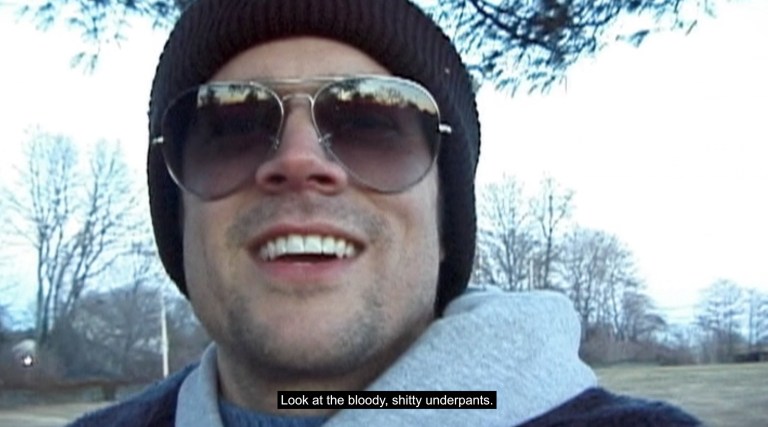
With a delirious mix of humor, creativity, thrill-seeking, and Schadenfreude, Johnny Knoxville’s hit MTV show Jackass became a film franchise. It turned extreme body stunts and the public humiliation of men into a mainstream phenomenon. But it was also panned by critics who feared it could potentially lead young viewers to harm themselves while attempting to recreate the stunts. It has been rumored that the fictional show Ow! My Balls in Mike Judge’s dystopian film Idiocracy was inspired by Jackass.
The Passion Of The Christ (2004)

Director Mel Gibson’s extremely gory account of Jesus Christ’s last twelve hours on Earth was rejected by all major studios, causing Gibson to have trouble finding a distributor—all of which led to incredible pre-release controversy. With subtitled dialogue in Aramaic, Latin, and Hebrew, The Passion of the Christ features a nearly unwatchable ten-minute scene in which Christ is whipped and beaten by Roman soldiers. Abe Foxman of the Anti-Defamation League said, “And when there is anti-Semitism rising throughout the world, [this film] can possibly again legitimize it and fuel it. The mail that we’re getting in the ADL just on the debate is full of anti-Semitism.” Despite the negative hype, the film, bolstered by praise from evangelical Christians, went on to become what at the time was both the highest-grossing independent film and R-rated film in history.
The Interview (2014)

This satire about the fictional assassination of North Korean dictator Kim Jong-un may be the only film in history that was consigned to oblivion by foreign hackers. Based on the idea that the film encouraged state-sponsored terrorism against its leader, North Korean hackers broke into Sony Pictures’ computer systems and also threatened cyber-attacks against any theaters willing to show it. Facing a possible $100-million loss, the film received almost no distribution.
Lipstick Under My Burkha (2016)

This black comedy production from India covers the secret lives of four Muslim women who search for personal freedom while still constrained by their religion. It was praised by Sweta Kaushal of The Hindustan Times, who wrote, “Every character in the film deals with different kinds of prejudices and restrictions but eventually, they prove to be the same – curbing the freedom of women. The small town setting enables the four characters to be part of each others’ lives and eventually come together.” Still, it was originally banned from Indian cinemas for being “too lady-oriented.” Five months after the film was cleared for viewing, director Alankrita Shrivastava says she received a letter claiming that her film contained “abusive words, audio pornography, and a bit sensitive touch about one particular section of society,” namely, Indian Muslims.
Joker (2019)

Todd Phillips’s origin story of the DC Comics villain was easily the most controversial film of 2019. It wound up being massively successful as a result of Joaquin Phoenix’s performance in the lead role, which won him an Oscar for Best Actor. Most of the film’s pre-release controversy was a result of an email warning from the US Army to service members warning of mass shootings in theaters due to the Joker character’s popularity among the incel (involuntarily celibate) community. The FBI also reported several threats to movie theaters, some by self-identified incels, some from a much tinier niche subculture that refer that refer to themselves as “clowncels.” As a result of the pre-release hype, the film was not screened at the theater in Aurora, CO where a mass shooting occurred at a screening of The Dark Knight Rises in 2012. In Japan in 2021, a man dressed in a Joker costume went on a stabbing spree on a Tokyo subway, injuring 17 and setting a fire on the train.
The Hunt (2020)
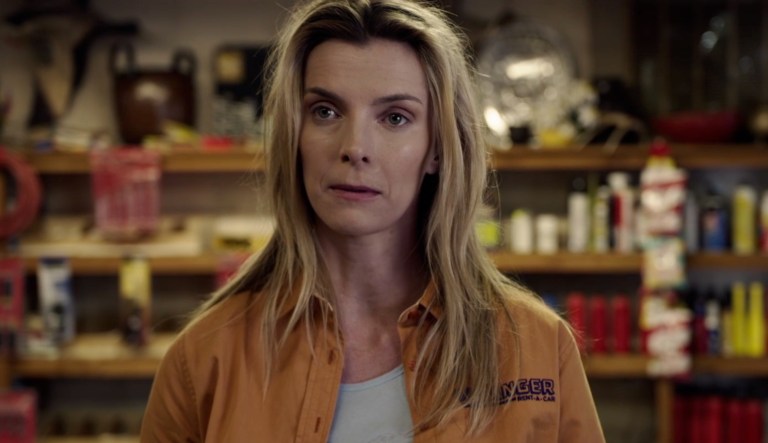
Ostensibly a satire about the intense American political divide during the Trump era, The Hunt is about a cabal of wealthy progressives who kidnap blue-collar people who hold conservative political beliefs and hunt them for pleasure. Based merely on the trailer, the film received tremendous online backlash prior to its release, fueled by a tweet from then-President Donald Trump in August 2019 warning that “The movie coming out is made in order to inflame and cause chaos.” But the film also triggered many on the left, who objected to right-wingers being depicted as humans rather than caricatures, and for the way it managed to upset “smug liberals…who were surprised to see the tables turned on them.”
Cuties (2020)
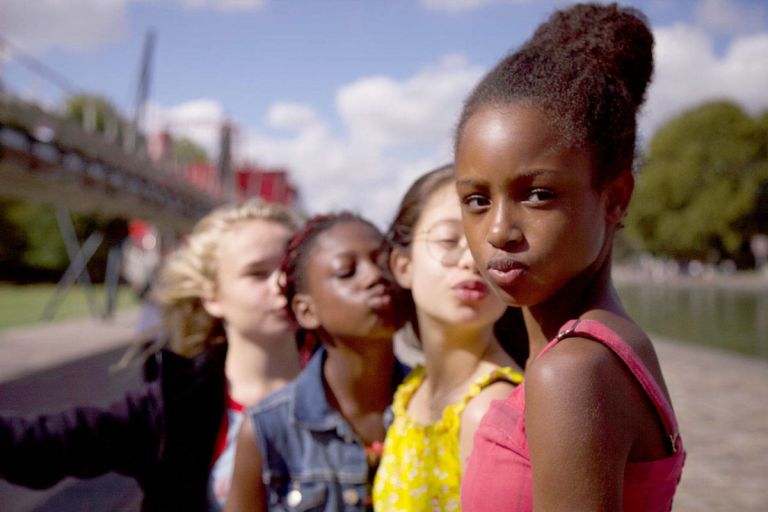
Released in France as Mignonnes, this Netflix original covers the journey of Amy, a prepubescent Senegalese girl living in Paris who joins a dance troupe known as the “Cuties” as a way to rebel against her strict Muslim upbringing. The film’s trailer—which prominently featured hyper-sexualized and barely clothed pre-adolescent girls twerking—caused an uproar among conservative groups who declared that the film would enable pedophilia and child-grooming.
More Offensive, Banned, and Controversial Movies
- Un Chien Andalou (1929) a collaboration between surrealist filmmaker Luis Bunuel and surrealist painter Salvador Dali, this 17-minute silent film is most notable for the opening scene, in which a straight razor slices through an eyeball. The film was banned in several countries.
- Ecstasy (1933) in 1935, this erotic Czechoslovakian drama became the first movie to be seized and censored by US Customs due to a scene in which a woman experiences erotic pleasure as a result of oral sex.
- …And God Created Woman (1956) established Brigitte Bardot as an international sex symbol but was heavily edited in its original American releases because its overt sexuality violated the Hays Code.
- Baby Doll (1956) this Elia Kazan film based on a Tennessee Williams play about a thumb-sucking child bride (Carroll Baker) was condemned by the Catholic League of Decency. TIME magazine called it “Just possibly the dirtiest American-made motion picture that has ever been legally exhibited…”
- Peeping Tom (1960) Michael Powell’s shocking masterpiece ruined his career due to its graphic depictions of a sexually depraved and voyeuristic serial killer and was widely banned in several countries.
- Victim (1961) Allegedly the first English-language film to mention the word “homosexual”—during a time when homosexuality was still officially banned in England—Victim was revolutionary in that it sympathetically depicted gay men as subject to blackmailing and harassment.
- Mondo Cane (1962) a “shockumentary” from Italy that featured naked “savages” from New Guinea, a Singaporean “House of Death,” and various other examples of “primitive” and “backwards” people from around the world.
- I Am Curious (Yellow) (1967) was a Swedish “mockumentary” that was seized by US Customs in 1968 and declared as obscene due to its multiple scenes featuring full-frontal nudity.
- Rosemary’s Baby (1968) Mia Farrow stars as a lapsed Catholic who is raped by the Devil and goes on to bear his child. The National Catholic Office for Motion Pictures condemned Rosemary’s Baby for “the perverted use which the film made of fundamental Christian beliefs, especially surrounding the birth of Christ, and its mockery of religious persons and practices.”
- Pink Flamingos (1972) in John Waters’s satirical attempt to find “the filthiest person alive,” the award goes to the drag queen Divine, who is filmed on camera eating actual dog feces.
- Deep Throat (1972) only an hour long and shot in the course of a week, this hardcore porno made a household name of Linda Lovelace, the actress whose “deep throat” contained a clitoris nine inches inside her mouth, so she could only achieve orgasm by fellating men with giant penises. Lovelace would later say she was drugged and coerced throughout the making of the film.
- Last Tango in Paris (1972) Italian auteur Bernardo Bertolucci’s X-rated story of an aging man (Marlon Brando) and his sexual obsession with a young girl (Maria Schneider) received two Oscar nominations (for Brando and Bertolucci). It also became the first film prosecuted under Britain’s Obscene Publications Act.
- Salo, or the 120 Days of Sodom (1975) Pier Paolo Pasolini’s scabrous classic melds Italian fascism, torture, blood, and coprophagia to form what many say is the most offensive and unwatchable movie ever made. Pasolini was murdered before the film was released.
- Snuff (1976) was originally marketed as containing a real-life murder at the end of the film that turned out to be a hoax. The film’s promotional campaign included several “outraged” comments from moral crusaders, all of which turned out to be forged as well.
- Dogma (1999) stars Ben Affleck and Kevin Smith and tells the story of two lapsed Catholics who think they’ve found a loophole in Catholic theology and attempt to use it in order to get back to heaven. The Catholic Church condemned the film as blasphemous. Protests erupted in several countries, and director Kevin Smith received multiple death threats.
- Irreversible (2002) is a French movie about a prolonged rape that was deliberately filmed to induce nausea through sound and lighting effects. It was common for viewers to walk out of the theater during the movie’s first few minutes. The film is part of the New French Extremity.
- Brokeback Mountain (2005) this non-explicit tale of gay love between two cowboys (Heath Ledger and Jake Gyllenhaal) was nominated for Best Picture at the Oscars but wound up being banned in China and many Islamic nations.
- The Human Centipede (2009) this nauseating tale of a sadist who stitches three people together face-to-buttocks to form a “human centipede” led to two equally revolting sequels.
- Noah (2014) is based on the biblical story of Noah’s ark but was banned in China for “religious-based reasons”) and in several Islamic countries due to what were perceived as unflattering portrayals of Islamic prophets.
- Dragged Across Concrete (2018) stars Mel Gibson and Vince Vaughn and was widely panned for having a “right-wing” take on police brutality. It received the prize for “Worst Reckless Disregard for Human Life and Public Property” at the Golden Raspberry Awards.
- Shut In (2022) stars Naomi Watts and was the first original film to be released by the conservative website The Daily Wire and was widely ignored by the mainstream media.
- Top Gun: Maverick (2022) was banned by the Chinese Communist Party for what was perceived as its pro-American and pro-Taiwan bias.
